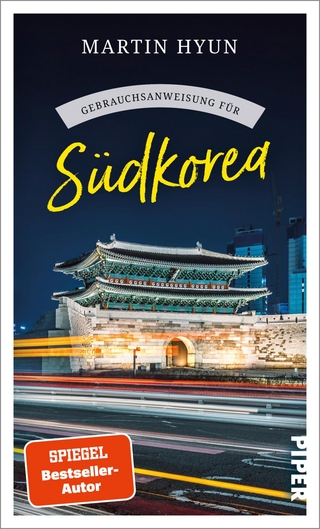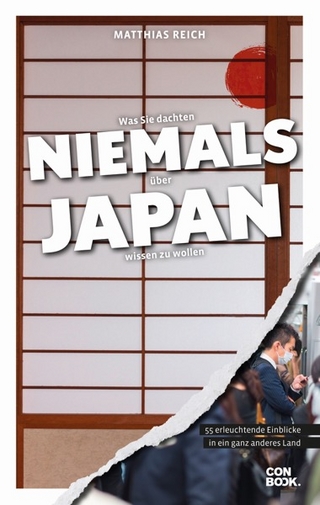
Longfellow's Tattoos
Tourism, Collecting, and Japan
Seiten
2004
University of Washington Press (Verlag)
978-0-295-98456-8 (ISBN)
University of Washington Press (Verlag)
978-0-295-98456-8 (ISBN)
- Titel ist leider vergriffen;
keine Neuauflage - Artikel merken
Charles Longfellow, son of Henry Wadsworth Longfellow, arrived in Yokohama in 1871. Interweaving Longfellow's experiences with broader issues of tourism and cultural authenticity, this book discusses the ideology of tourism and the place of Japan within nineteenth-century round-the-world travel.
Charles Longfellow, son of Henry Wadsworth Longfellow, arrived in Yokohama in 1871, intending a brief visit, and stayed for two years. He returned to Boston laden with photographs, curios, and art objects, as well as the elaborate tattoos he had “collected” on his body. His journals, correspondence, and art collection dramatically demonstrate America’s early impressions of Japanese culture, and his personal odyssey illustrates the impact on both countries of globetrotting tourism.
Interweaving Longfellow’s experiences with broader issues of tourism and cultural authenticity, Christine Guth discusses the ideology of tourism and the place of Japan within nineteenth-century round-the-world travel. This study goes beyond simplistic models of reciprocal influence and authenticity to a more synergistic account of cross-cultural dynamics.
Charles Longfellow, son of Henry Wadsworth Longfellow, arrived in Yokohama in 1871, intending a brief visit, and stayed for two years. He returned to Boston laden with photographs, curios, and art objects, as well as the elaborate tattoos he had “collected” on his body. His journals, correspondence, and art collection dramatically demonstrate America’s early impressions of Japanese culture, and his personal odyssey illustrates the impact on both countries of globetrotting tourism.
Interweaving Longfellow’s experiences with broader issues of tourism and cultural authenticity, Christine Guth discusses the ideology of tourism and the place of Japan within nineteenth-century round-the-world travel. This study goes beyond simplistic models of reciprocal influence and authenticity to a more synergistic account of cross-cultural dynamics.
Christine M. E. Guth is one of the foremost scholars in Japanese art history working in the United States today. Her publications include Asobi: Plays in the Arts of Japan; Art, Tea, and Industry: Masuda Takashi and the Mitsui Circle; and Art of Edo Japan: The Artist and the City, 1615-1868.
Acknowledgments
Note to the Reader
Introduction
1. Globe-Trotting in Japan
2. Picturing Japan
3. Paradise of Curios
4. Embodying Japan
5. Domesticating Japan
Epilogue
Notes
Selected Bibliography
Index
| Erscheint lt. Verlag | 1.10.2004 |
|---|---|
| Reihe/Serie | Longfellow's Tattoos |
| Zusatzinfo | 116 illus., 12 in color |
| Verlagsort | Seattle |
| Sprache | englisch |
| Maße | 178 x 254 mm |
| Gewicht | 771 g |
| Themenwelt | Kunst / Musik / Theater ► Allgemeines / Lexika |
| Reisen ► Reiseberichte ► Asien | |
| Reisen ► Reiseberichte ► Nord- / Mittelamerika | |
| Sozialwissenschaften ► Soziologie ► Spezielle Soziologien | |
| ISBN-10 | 0-295-98456-2 / 0295984562 |
| ISBN-13 | 978-0-295-98456-8 / 9780295984568 |
| Zustand | Neuware |
| Haben Sie eine Frage zum Produkt? |
Mehr entdecken
aus dem Bereich
aus dem Bereich
Buch | Softcover (2024)
Conbook Medien (Verlag)
CHF 15,90


